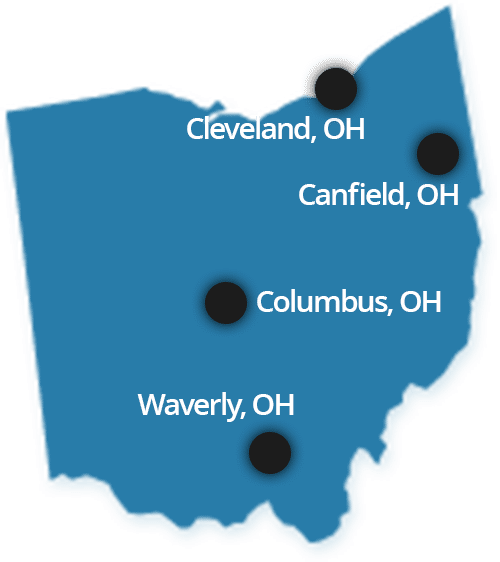It’s not unusual to be a little nervous when you’re standing at the top of a long water slide or getting ready to jump off a platform holding tight to a rope. But few of us expect serious injuries from these water park attractions–let alone lazy rivers and splash pads and other gentler-looking options.

Unfortunately, a fun and relaxing day at the water park can go very wrong–sometimes in very unexpected ways. One of those incidents inspired Ohio legislators to limit water pressure in settings like splash pads and spas.
Pending Ohio Water Park Legislation
In 2019, a seven-year-old girl named Makenna Day suffered a serious internal injury while attending a water park when she unexpectedly encountered a water jet with an unreasonably high level of water pressure, requiring surgery to repair the wound.
Park operators later said the water pressure had been turned up higher than usual that day. It may be surprising that water could cause such a serious injury, but high-pressure water jets can be dangerous in a variety of ways, including pushing a person, causing bruising, or lacerating the skin. At the time of Makenna’s injury, there was no clear restriction on the water pressure that could be employed in water parks and other recreational settings.
In 2021, the Ohio House passed Makenna’s Law, a statute that would limit the water pressure in a variety of settings such as nozzles and fountains in water parks, public pools, and spas. The bill was referred to the Senate General Government Budget Committee in early April of this year.
Sec. 3749.08. (A) The flow rate through a feature nozzle of a water feature, including a fountain or other interactive feature, at a public swimming pool, public spa, or special use pool shall be such as not to harm patrons and shall not exceed twenty feet per second unless justified by the design engineer and by the fountain system manufacturer.
Makenna’s Law
Ohio Water Park Injuries
Makenna’s injury was unexpected and avoidable, and a clear solution was available. Makenna’s Law, if passed, will help protect others from similar injury. But there are many other possible risks of water parks. Here are a few water park incidents you will likely recall from the news:
- In July 2021, a 14-year-old girl drowned in Land of Illusion’s Aqua Adventure Park–an area in the lake containing inflatable platforms, climbing equipment, and slides. Though signs at the park indicated that life vests were required, the girl wasn’t wearing one. Local media reported that she was pulled out of the water about 30 minutes after she initially went under and didn’t resurface. The same day Mykiara Jones died, local officials received a complaint about overcrowded conditions and lack of supervision at the park the previous weekend.
- In the summer of 2016, the 10-year-old son of a Kansas state senator was killed when the raft the boy was riding in flew off the track on what was then the world’s tallest water slide. Two women riding in the raft were also injured. The park settled a lawsuit with the boy’s family and then tore down the slide.
But these are just some of the most tragic water park injury examples. In 2015, a woman was thrown from her raft on a water slide in northern Illinois and broke her back. In 2019, 44 people were injured in a wave pool in China as the result of an “accidental tsunami.” Though that event was more extreme than most, there have been several drownings in wave pools, and other injuries from being knocked down, inhaling water, and being scraped against surfaces.
One of the key questions after a serious water park injury or fatality is, “who is responsible?” The answer to that question can help protect others from suffering similar injuries or death. And it can help ensure fair compensation for the injured person or surviving family members.
Liability for Ohio Water Park Injuries
Legal responsibility for an Ohio water park injury or fatality depends on the circumstances of the injury or death. For example, if the water park was negligent in some way and that negligence caused or contributed to the injury, the park may be liable.
But liability doesn’t attach simply because the incident occurred on park property or even on the water park’s equipment. The park must have breached its duty in some way, such as by failing to properly maintain equipment or providing inadequate training to employees. And that breach must have led to or played a significant role in causing the accident and resulting damages.
Many water parks require visitors to sign a liability waiver, which may preclude the injured person from pursuing damages against the park. Note, though, that liability waivers aren’t always enforceable in Ohio. So, if you’ve been injured at a water park and signed a waiver, it’s still worth talking to an attorney to find out whether the waiver is likely to hold up in court.
Some other possible responsible parties include:
- The manufacturer of equipment that caused or contributed to the injury or death, such as a water slide, the raft riders use on a water slide, a water cannon, a defective life vest, or a wave pool mechanism, or
- Another guest at the water park whose negligence or intentional act caused or contributed to the injury or death.
Comparative Negligence in Ohio
The injured person may also bear some responsibility for the incident that caused the injury. In the water park context, for instance, that might mean neglecting to wear a life vest when required or attempting a “daredevil” type trick on a water slide or other equipment.
In Ohio, an injury victim who was partially responsible may still be able to recover some damages. However, the compensation available is reduced by the percentage of fault attributable to the injured person. So, for instance, if total damages were $100,000 and an Ohio jury found that the plaintiff had been 20% responsible for their own injuries, the award would be reduced by 20%. The injured party would receive $80,000 instead of $100,000.
If the injured person is found to be more than 50% responsible, they are not entitled to compensation under Ohio law. If the amount of damages was $100,000 and the injured person was found to be 49% responsible, they could still be awarded $51,000. But if they were found to be 51% responsible, they would receive nothing.
The significant difference a couple of percentage points can make is just one of the reasons that it’s in your best interest to consult an experienced water park injury attorney as soon as possible after a water slide accident or other water park injury.
Plevin & Gallucci Helps Ohio Injury Victims
At Plevin & Gallucci, we have decades of experience helping injury victims recover fair compensation. We’ll assess your case, identify possible responsible parties, investigate, interview witnesses, gather evidence, work with expert witnesses, negotiate with the responsible party’s attorney, and more.
To learn more about how we can build and manage your water park injury case while you focus on your recovery, call 855-4PLEVIN, fill out the contact form on this site, or click in the lower right-hand corner to chat.

